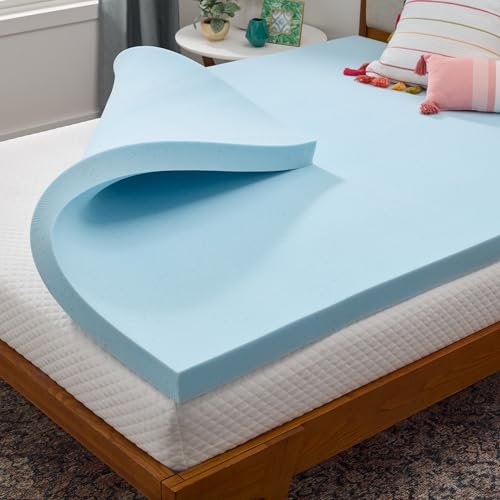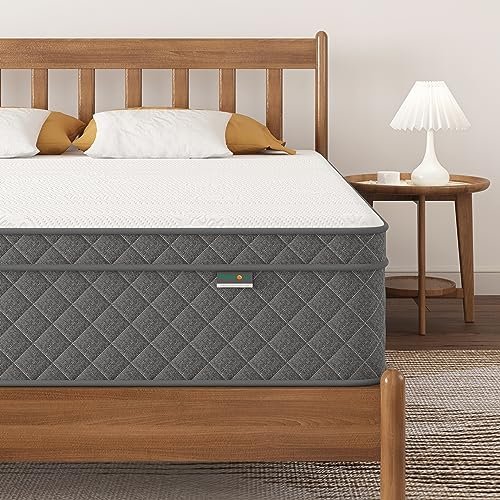
Mastering Your Bed Frame: How to Adjust It for Perfect Sleep and Support
Your bed frame is the unsung hero of your sleep sanctuary, providing the essential foundation for your mattress and, by extension, your rest. But what happens when it’s not quite right? Maybe it’s a little wobbly, making noise, or simply not the ideal height for your new mattress.
The good news is that adjusting your bed frame can often solve these common issues, leading to improved comfort, better mattress longevity, and a quieter, more stable sleep environment. This detailed guide will walk you through everything you need to know to fine-tune your bed frame, ensuring it perfectly supports your sleep needs.
Let’s dive in and transform your bed from simply functional to fantastically comfortable!
Why Adjust Your Bed Frame? The Benefits Are Clear!
Taking the time to properly adjust your bed frame offers a surprising number of advantages:
- Enhanced Comfort: A stable, level bed means your mattress can perform as intended, cradling you without dips or instability.
- Extended Mattress Lifespan: Proper support prevents premature sagging and wear, especially in the center of your mattress.
- Eliminate Annoying Squeaks and Wobbles: A tightened frame is a quiet frame, letting you drift off to sleep undisturbed.
- Improved Aesthetics: Adjusting height can make your bed look more proportional to your room and make getting in and out easier.
- Optimal Fit: Ensuring your mattress fits snugly within the frame prevents shifting and gaps.
- Safety: A stable bed frame is a safer bed frame, reducing the risk of falls or collapses.
Getting Started: What You’ll Need & Safety First
Before you begin, gather a few basic tools and keep safety top of mind.
Tools You Might Need:
- Wrench (adjustable or specific sizes): For tightening bolts.
- Screwdriver (Phillips and/or flathead): For screws.
- Allen wrench (hex key): Many modern frames use these.
- Rubber mallet (optional): For gently tapping parts into place.
- Measuring tape: For checking dimensions and ensuring levelness.
- Level: Crucial for confirming even support.
- Gloves: To protect your hands.
- Flashlight or headlamp: To see under the frame.
- A helper: Highly recommended for lifting, holding, and moving the frame/mattress safely.
Safety First – Don’t Skip This!
- Two-Person Job: Whenever possible, always have a second person to help lift the mattress and frame components. This prevents injury and makes the process much easier.
- Clear the Area: Move furniture, rugs, and anything else out of the way to create ample working space.
- Remove Bedding and Mattress: For most adjustments, you’ll need to remove your mattress and box spring (if applicable) from the frame.
- Read Your Frame’s Manual: If you still have it, consult your bed frame’s assembly instructions. They often contain specific details about adjustment points.
- Don’t Over-Tighten: While you want connections snug, over-tightening bolts can strip threads or damage the frame material.
Step-by-Step Guide: How to Adjust Your Bed Frame
We’ll cover the most common types of adjustments you might need to make.
1. Adjusting Bed Frame Height
This is often needed if your bed feels too low or too high, or if you’ve gotten a new mattress that changes the overall bed height.
Method A: Frames with Adjustable Legs
Many modern metal and even some wooden frames come with legs designed for height adjustment.
- Remove Mattress and Box Spring: Carefully lift and set aside your mattress and box spring.
- Locate Adjustment Points: Look for pins, clips, or threaded sections on the bottom of the frame’s legs.
- Unlock/Unscrew:
- If there are pins, press them in to release the leg section.
- If there are clips, unlatch them.
- If the leg is threaded, you might be able to twist it to lengthen or shorten.
- Adjust Height: With your helper, gently lift one section of the frame and adjust the leg to the desired height.
- Secure: Make sure the pin snaps back into place, the clip is re-latched, or the threaded section is tightened.
- Repeat for All Legs: Go around the entire frame, adjusting each leg to the exact same height. Use a tape measure to double-check.
- Check for Levelness: Once all legs are adjusted, use your level across the frame rails to ensure it’s perfectly flat. Make small adjustments if needed.
- Replace Components: Carefully place your box spring and mattress back on the frame.
Method B: Using Bed Risers (for Non-Adjustable Legs)
If your frame’s legs aren’t adjustable, bed risers are a popular solution.
- Remove Mattress and Box Spring: This is essential.
- Lift and Place: With your helper, carefully lift one corner of the bed frame (not just the mattress).
- Position Riser: Place the bed riser securely under the bed frame leg. Ensure the leg sits firmly and centered within the riser’s top groove or cup.
- Lower Gently: Slowly and carefully lower the frame leg onto the riser.
- Repeat for All Legs: Work your way around the frame, lifting each leg individually and placing a riser underneath. Ensure all risers are the same height to maintain stability and prevent wobbling.
- Check Stability: Gently shake the frame to ensure it feels stable. If it wobbles, re-check the placement of each riser.
- Replace Components: Carefully place your box spring and mattress back on the frame.
2. Enhancing Stability and Eliminating Squeaks
A wobbly or squeaky bed frame is incredibly frustrating. The good news is that these issues are often resolved by simply tightening connections.
- Remove Mattress and Box Spring: This provides full access to all frame components.
- Systematic Tightening:
- Start at one corner and methodically check every single bolt, screw, and connection point.
- Use the appropriate wrench or screwdriver to tighten each fastener until it is snug. Do not overtighten.
- Pay special attention to where the side rails connect to the headboard and footboard. These are common culprits for squeaks and wobbles.
- Inspect Center Support Legs (Crucial!):
- Many frames, especially queen, king, and California king, have a center support beam with one or more legs.
- Ensure these center legs are firmly touching the floor. Some are threaded and can be twisted down to make contact.
- If they are loose or not touching, they aren’t doing their job, leading to sag and instability.
- Address Slats:
- If your frame uses wooden slats, ensure they are securely seated in their designated holders or evenly spaced.
- Check if any slats are cracked or broken. Replace them if necessary.
- Sometimes, slats rubbing against the side rails cause squeaks. You can try strategically placing thin felt pads or pieces of cork between the slat ends and the rail.
- Lubricate (Sparingly!):
- If a specific metal-on-metal squeak persists after tightening, a very small amount of silicone-based lubricant spray (not oil-based, which can attract dust and grime) can be applied very sparingly to the specific contact point. Wipe away any excess immediately.
- Test: Before replacing the mattress, gently push and pull on the frame to check for any remaining wobbles or squeaks.
3. Adjusting for Mattress Fit (Length, Width, Support)
Sometimes, you might need to adjust the frame slightly to ensure your mattress fits perfectly, preventing shifting or inadequate support.
- Remove Mattress and Box Spring: Essential for clear access.
- Adjustable Side Rails:
- Some universal metal bed frames have adjustable side rails that can be extended or retracted to accommodate different mattress sizes (e.g., converting a full to a queen).
- Locate the bolts or pins that secure the rail length. Loosen them, adjust the rail to the desired length/width (measure carefully!), and then re-tighten securely.
- Ensure all rails are adjusted symmetrically.
- Slats and Support:
- Check Slat Spacing: For many mattresses (especially foam and hybrid), slats should be no more than 2-3 inches apart to provide adequate support and prevent sagging. If your slats are too far apart, you may need to add additional slats or consider a bunkie board.
- Center Support: Reiterate the importance of the center support beam and legs for larger mattresses. Without it, even the best mattress will sag over time. Ensure it’s properly installed and supporting the entire length/width.
- Bunkie Board (If Needed): If your frame only has a few widely spaced slats, or if your mattress warranty requires a solid surface, a bunkie board can provide a flat, stable platform. (This is a type of solution, not a specific product recommendation).
General Tips for Bed Frame Maintenance
- Regular Check-Ups: Make it a habit to periodically re-tighten all bolts and screws on your bed frame, perhaps once every 6-12 months. This is especially true if you move your bed often.
- Don’t Jump on the Bed: While tempting, jumping puts undue stress on the frame’s joints and can loosen fasteners quickly.
- Respect Weight Limits: Be aware of the weight capacity of your bed frame (including mattress, box spring, and occupants). Exceeding it can lead to damage.
- Clean Regularly: Dust and debris can accumulate around joints, sometimes contributing to friction and noise. A quick wipe-down can help.
Common Mistakes to Avoid
- Ignoring the Manual: Your bed frame’s specific instructions are your best friend.
- Working Alone: Attempting to lift a mattress or heavy frame components by yourself is a recipe for injury. Always get help.
- Over-tightening Bolts: This can strip the threads, making it impossible to tighten them properly in the future, or even crack the frame material. Snug is good; straining is bad.
- Neglecting Center Support: Many people focus only on the outer frame. The center support system is critical for preventing mattress sag and ensuring stability, especially for larger beds.
- Not Using a Level: Eyeballing adjustments can lead to an uneven frame, which will feel uncomfortable and can cause mattress issues.
- Rushing the Process: Take your time, work systematically, and double-check your work. A few extra minutes now can save you headaches later.
- Using the Wrong Tools: Forcing the wrong wrench or screwdriver can strip fasteners, making them difficult to adjust or remove.
When to Call a Professional or Consider Replacement
While many adjustments are DIY-friendly, there are times when it’s best to seek professional help or consider a new frame:
- Extensive Damage: If the frame has major cracks, bends, or broken welds, it might be beyond repair.
- Stripped Fasteners: If multiple bolts or screw holes are stripped and won’t tighten, the frame may no longer be stable.
- Persistent Issues: If you’ve tried all the adjustments and the frame is still wobbly, squeaky, or uncomfortable, it might be a design flaw or simply too old/worn out.
- Safety Concerns: If you ever feel unsafe on your bed frame due to its condition, it’s time for a replacement.
Conclusion
A properly adjusted bed frame is the foundation of a good night’s sleep. By taking the time to address height, stability, and fit, you’re not just fixing a piece of furniture; you’re investing in your comfort, your mattress’s longevity, and ultimately, your well-being.
So, roll up your sleeves, grab your tools, and get ready to fine-tune your sleep sanctuary. Here’s to stable, silent nights and sweet dreams!
Frequently Asked Questions(FAQ)
Q. Why would I need to adjust my bed frame?
A. You might need to adjust your bed frame for several reasons, including changing the bed height for easier access or under-bed storage, accommodating a new mattress thickness, resolving squeaks or wobbles, leveling the bed on an uneven floor, or ensuring proper support for your mattress.
Q. How do I adjust the height of my bed frame?
A. Many bed frames, especially metal ones, have pre-drilled holes or adjustable legs. To adjust the height, you typically need to unscrew bolts on the leg extensions, slide the legs up or down to the desired height setting (usually indicated by different hole alignments), and then re-secure the bolts tightly. Some wooden frames might require adding or removing risers.
Q. Can I adjust the width or length of my bed frame?
A. Some modern bed frames are designed to be expandable, allowing you to adjust their width or length to fit different mattress sizes (e.g., converting a full to a queen). These frames usually have telescoping side rails or crossbars that can be extended and then locked into place with bolts or latches. Always check your frame’s manual to see if it has this feature.
Q. How do I adjust the center support legs on my bed frame?
A. Center support legs are crucial for preventing mattress sagging. Most are threaded, allowing you to twist them clockwise to extend them or counter-clockwise to retract them. Adjust them so they firmly touch the floor, providing solid support, but without lifting the entire frame. Some may have pin-and-hole adjustments similar to height-adjustable legs.
Q. What should I do if my bed frame is wobbly or uneven?
A. First, check that all bolts and screws securing the frame components are tightened. Then, inspect the floor for unevenness. If the floor is the issue, you can use furniture glides or shims under the bed legs to level the frame. For severe wobbles, ensure all legs (including center supports) are making firm contact with the floor, adjusting them as needed.
Q. How can I adjust my bed frame to reduce squeaking or noise?
A. Squeaking often comes from loose connections or metal-on-metal friction. Tighten all bolts and screws on the frame, paying close attention to the joints. You can also try adding felt pads, rubber washers, or even a thin layer of lubrication (like WD-40 for metal, but be careful not to get it on the mattress) to contact points or joints where friction occurs.
Q. Can I adjust the slats on my bed frame, and why would I need to?
A. Some high-end or European-style bed frames feature adjustable slats, particularly those made of bowed plywood. These “tension-adjustable” slats can be customized to be firmer or softer in certain areas (e.g., firmer under the lumbar region) by sliding small plastic adjusters. This allows for personalized comfort and support for different mattress types or body weights.
Q. How do I adjust the headboard attachment points on my bed frame?
A. Many bed frames have universal brackets with multiple pre-drilled holes for attaching a headboard. If your headboard isn’t aligning correctly or you want to change its height, you can often unscrew the headboard from the frame, select a different set of holes on the bracket to raise or lower it, and then re-attach it securely.
Q. What tools do I typically need to adjust a bed frame?
A. The most common tools needed for bed frame adjustments include a Philips head screwdriver, an Allen wrench (hex key) – often provided with the frame – and a crescent wrench or socket wrench for tightening nuts and bolts. A level can also be helpful for ensuring the frame is even.
Q. Are all bed frames adjustable, or only certain types?
A. Not all bed frames offer the same degree of adjustability. Basic, fixed-size frames may only allow for minor adjustments like leveling or tightening. More versatile frames, such as expandable metal frames, those with adjustable height legs, or slatted foundations with tension adjusters, are specifically designed for various forms of customization. Always refer to your frame’s manual to understand its specific adjustable features.
Related Articles
7 Top Full Size Bed Frames: What is the Dimensions of a Full Size Bed Frame and More!
Getting a good night’s sleep often starts with the right bed, and for many, a full-size bed is the perfect sweet spot between a twin and a queen…
How Much Is a King Size Sleep Number Smart Bed
How Much Is a King Size Sleep Number Smart Bed? Your Guide to Understanding the Investment Recommended Product: Select Comfort Air Bed Chamber for Sle…
How Much Does a Sleep Number 360 Smart Bed Cost
How Much Does a Sleep Number 360 Smart Bed Cost? Recommended Product: Sven & Son Classic Adjustable Bed Base — head and foot lift, massage, under-…



